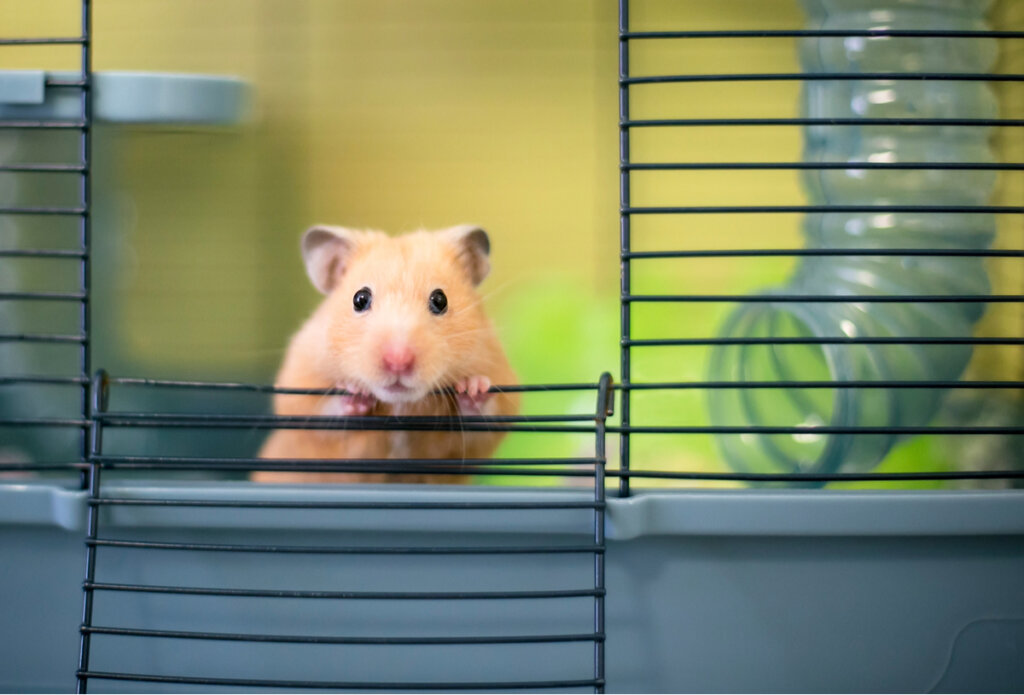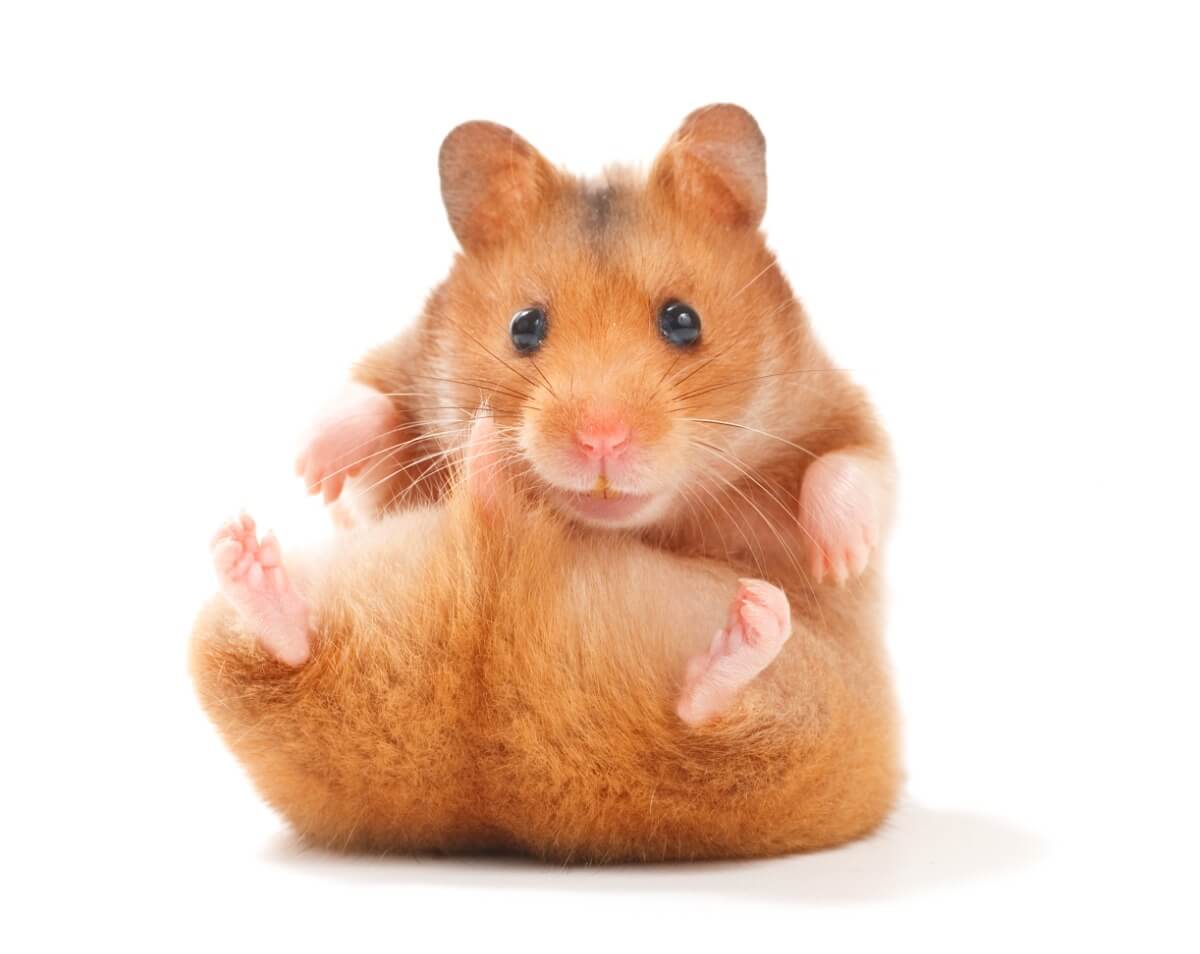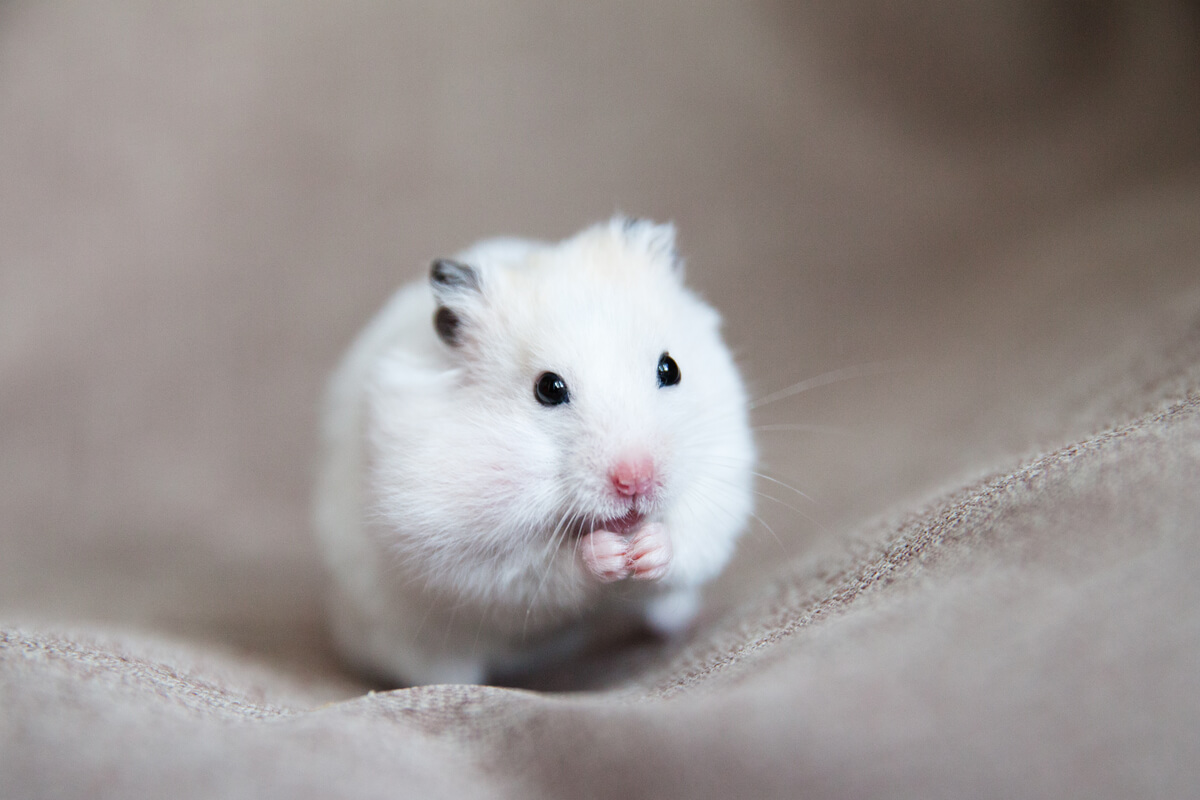13 Curiosities About Hamsters

Among the many curiosities about hamsters, it should be noted that there are specimens of different sizes, colors, and coats. They can be black, yellow, white, or a combination of different colors, as well as having different stripes and patterns depending on the race and species.
Hamsters are rodents that belong to the Cricetinae family, which recognizes 7 genera and 24 different species. All of these rodents have small tails, large ears, bulging eyes, a chubby build, and small, fat legs. Learn about 13 curiosities about hamsters in this article.
1. 5 types of hamsters can be tamed
We could tell you many curiosities about hamsters, as there are different races and types, although most varieties are the result of crossing and mixing between specimens of the same species. Still, only five of these rodents can be domesticated normally, according to experts. They are the following:
- The golden, common or Syrian hamster
- Siberian Russian hamster or gray dwarf
- The Roborovski dwarf hamster
- The Campbell hamster
- Chinese hamster

2. These rodents come from Europe and Asia
Wild hamsters are typical of Europe and Asia, according to biologist Peter Fritzsche. In Central Europe they were considered a pest because they invaded cereal fields and carried off lots of grains to their burrows.
As you can imagine, the situation has changed. Currently, there are few wild specimens left – due to hunting that took place a long time ago – and they’re protected by very strict laws to prevent their extinction.
Of all the species, the best known is the golden hamster, which was discovered in Syria in 1839. It was believed to be extinct until 1930. In that year, a female and her litter were captured and in 1940 it was introduced as a companion animal. All descendant pets today are believed to have come from that litter captured in 1930.
3. Their size and weight vary according to the species
The golden hamster can measure up to 18 centimeters (7 inches), the Chinese doesn’t reach any more than 13 centimeters (5 inches) and the Campbell reaches up to 10 centimeters (4 inches) in size. Regarding the weight, the dorados can weigh up to 180 grams ( 7 oz) and other species do not exceed 50 grams (2 oz).
4. They have pockets in their cheeks
Hamsters’ cheeks can extend almost to their hind legs and are used to carry food. Their bags on each side are called pockets. In order to hold the food better, the inside of their cheeks is covered with rough skin full of bristles, to the point of having to help themselves with their feet to be able to empty them.
Because of this habit of storing and hoarding food in their cheeks, these rodents have a reputation as hoarders. From this behavior comes its name: the German verb hamstern means to hoard.
5. They are solitary animals
Despite living as pets, all species of hamsters are solitary, preferring to be alone and trying to avoid each other. Males and females are together for a short time during mating. With the golden hamster, for example, the mother takes care of the young and doesn’t tolerate the presence of the male around her.
For this reason, it’s preferable to never to bring two hamsters that do not know each other together. It’s better to keep them separated, because whoever the weaker of the two will be constantly attacked.
6. Curiosities about hamsters: don’t bother them when they’re asleep
Never hold these rodents with your hands when they’re asleep, as this creates a lot of stress for them. If the rodent is quite tame, you can offer your hand to them or stroke them with your finger while it’s on the ground. Above all, avoid touching its belly.
7. They’re nocturnal animals
These little animals wake up at dusk to start their activity. Their most active time is 3 hours after waking up and later on in the morning they go back to sleep. Presumably, with this schedule in the wild they’ll avoid raptors, one of their biggest predators.
8. Short lives
Their metabolism is very fast to keep their body temperature constant. Because of this, their heart beats an average of 325 times per minute. To give you an idea, human hearts beat 70 times per minute. Because of this, their lives are usually very short: they live between 2 to 3 years in captivity and, in the wild, they don’t normally don’t survive two winters.
9. They’re very active rodents
Being so active, these animals constantly need to move and exercise. Therefore, it’s advisable to let them out for a run in a room of your house from time to time and put a wheel or ball in the cage so they can run as much as they want.
10. Domesticated hamsters don’t hibernate
If you have a pet of this type, there’s no reason to induce it to hibernate, like they do in the wild – usually when the temperature drops below 8ºC. They roll up like a ball inside their burrow to lose less heat and, incredibly, their heart beats only 2 or 3 times per minute.
11. Smell and hearing are their most developed senses
Hamsters can recognize each other by smell. It has been proven that even siblings who grow up apart can recognize each other again. Regarding their sight, it should be noted that they don’t see very well. They focus poorly from afar and during the day they’re almost blind.
Their hearing is excellent, as they hear the same sounds as humans and communicate with each other by ultrasound. Even the young use it to complain about something! Experts believe that they’re able to differentiate between different tones of voice, so if you constantly greet your hamster it will soon recognize you.
12. Their teeth don’t stop growing
Being rodents, their incisors are growing all the time and they need to wear them down regularly. Hard seeds and biters make this task much easier in captivity.
13. In the wild, they spend a lot of time in their burrows
Hamsters spend around 20 hours a day inside their burrow and only come out to look for food at night or at dawn. If the temperature rises or falls too much, they can go months without going out.
Therefore, it’s important that hamsters in captivity are provided with a quiet place, a little house where they can rest and sleep without being disturbed by anyone during the day. Hamsters without a little home tend to be aggressive, more prone to developing diseases, and have a shorter life expectancy.

As you can see, there are many little-known and valuable curiosities about hamsters for anyone who wants to find out a little more about them or simply give their little rodent a better quality of life. Without a doubt, these cute little balls of energy will never cease to amaze us.
All cited sources were thoroughly reviewed by our team to ensure their quality, reliability, currency, and validity. The bibliography of this article was considered reliable and of academic or scientific accuracy.
Fritzsche, P. (2008). El hamster. Hispano Europea. https://books.google.es/books?hl=en&lr=&id=BVrdjDuY8HQC&oi=fnd&pg=PA6&dq=cuidados+hamsters&ots=S53TAYEXx8&sig=yW1GCe_f1J1Jhmb5mC2F4CTi4Hc#v=onepage&q=cuidados%20hamsters&f=false
Org, H. O. (2020, 11 junio). ▷▷ CARACTERÍSTICAS DE LOS HAMSTERS – Hamster Online – 2020. Hamster Online. https://hamsteronline.org/caracteristicas-de-los-hamsters/
Winnicker, C., & Pritchett-Corning, K. R. (2021). Behavioral biology of hamsters. Behavioral Biology of Laboratory Animals, 165-171.
Miao, J., Chard, L. S., Wang, Z., & Wang, Y. (2019). Syrian hamster as an animal model for the study on infectious diseases. Frontiers in immunology, 10, 2329.
